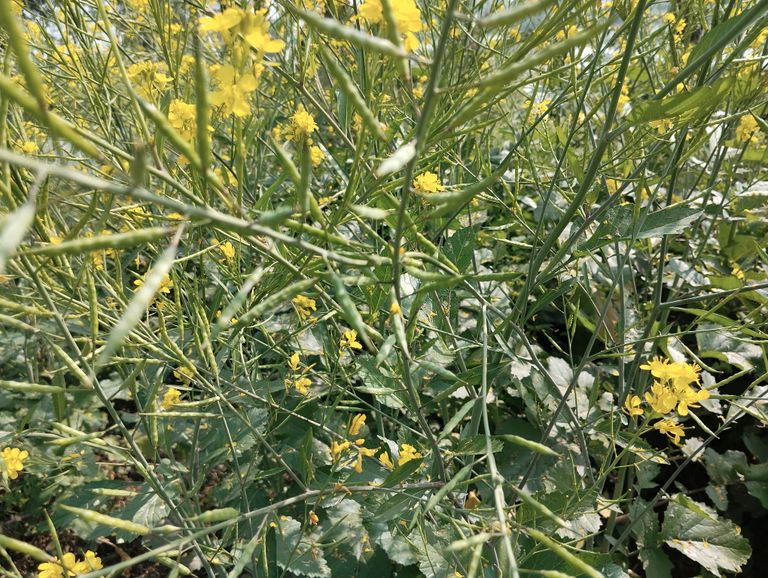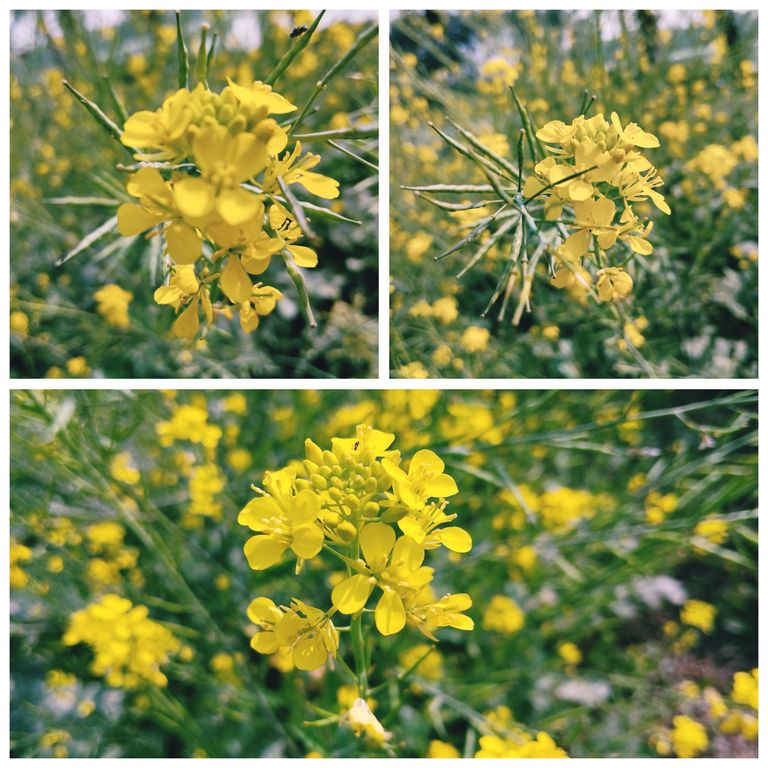
Techniques for Extracting Oil from Mustard Seeds.
Extracting oil from mustard seeds is an age-old practice with significant economic, culinary, and medicinal importance. This blog explores the various methods used to extract oil from mustard seeds, from traditional approaches to modern industrial techniques.
- Understanding Mustard Seeds and Their Oil Content
Mustard seeds are small, round seeds derived from mustard plants. They are rich in oil content, typically ranging between 30-40%. The oil extracted is known for its pungent aroma, strong flavor, and numerous health benefits. Mustard oil is widely used in cooking, massage therapy, and even in traditional medicine for its anti-inflammatory properties.
- Traditional Methods of Extracting Mustard Oil
Before industrialization, mustard oil was extracted manually using simple tools and techniques. While these methods are less efficient than modern processes, they remain popular in rural areas.
a. Stone Mortar and Pestle Method
Process: Seeds are ground in a large stone mortar using a pestle or a heavy wooden implement.
Pros: Simple, low-cost method.
Cons: Labor-intensive and yields lower quantities of oil.
b. Manual Cold Pressing
Process: Mustard seeds are placed in a wooden or metal press, and pressure is manually applied to extract oil.
Advantages: Produces unrefined, chemical-free oil.
Drawbacks: Time-consuming and inefficient for large-scale production.
- Modern Techniques for Extracting Mustard Oil
With advancements in technology, the oil extraction process has become faster and more efficient, ensuring higher yields and better quality.
a. Mechanical Expeller Pressing
Process: Seeds are crushed using a screw press (oil expeller). The friction and pressure cause the oil to be released, which is then collected and filtered.
Advantages: Efficient, scalable, and widely used in small- to medium-scale operations.
Limitations: Heat generated during the process may degrade some nutrients in the oil.
b. Cold Pressing (Hydraulic Press)
Process: Seeds are pressed using hydraulic equipment at low temperatures to preserve nutrients and flavor.
Benefits: Produces premium quality oil with a rich aroma and intact nutrients.
Challenges: Slower process and higher costs compared to mechanical pressing.
c. Solvent Extraction
Process: Mustard seeds are treated with chemical solvents (like hexane) to extract oil. The mixture is then heated to remove the solvent, leaving pure oil.
Advantages: Maximizes oil yield from seeds.
Disadvantages: Requires advanced equipment and may leave trace chemicals if not processed correctly.
d. Supercritical CO2 Extraction
Process: Involves using supercritical carbon dioxide to extract oil from mustard seeds.
Advantages: Highly efficient and produces pure oil without chemical residues.
Limitations: Expensive and suitable mainly for specialized industries.
- Pre-Processing Steps for Optimal Oil Extraction
Regardless of the method used, certain pre-processing steps ensure efficient oil extraction:
- Cleaning: Removing impurities like dust, stones, and foreign particles.
- Drying: Ensuring the seeds are moisture-free to prevent spoilage and enhance oil yield.
- Crushing or Grinding: Breaking the seeds into smaller pieces to make oil extraction easier.
- Post-Processing: Refining and Packaging
After the oil is extracted, it undergoes several refining processes to improve its quality:
Filtering: Removes seed particles and impurities.
Degumming: Eliminates natural gums and phospholipids.
Neutralization: Adjusts acidity levels to enhance taste and shelf life.
Packaging: Stored in airtight containers to prevent oxidation and preserve freshness.
- Environmental Considerations in Mustard Oil Extraction
Sustainability is becoming a crucial factor in the oil extraction industry:
Recycling Residues: Leftover seed cakes can be used as organic fertilizers or animal feed.
Energy Efficiency: Modern equipment focuses on reducing energy consumption.
Chemical-Free Practices: Promoting cold pressing and mechanical methods to minimize environmental impact.
- Economic and Health Benefits of Mustard Oil
a. Economic Importance
Mustard oil is a significant contributor to rural economies, especially in countries like India and Bangladesh.
Small-scale oil extraction units provide employment opportunities.
b. Health Benefits
Rich in monounsaturated fats, omega-3 fatty acids, and antioxidants.
Helps in reducing inflammation, improving heart health, and boosting skin and hair quality.
The process of extracting oil from mustard seeds has evolved over time, blending traditional knowledge with modern technology. While traditional methods preserve cultural heritage, modern techniques ensure efficiency and quality. Whether for personal use or large-scale production, understanding these methods can help producers choose the best approach to suit their needs.
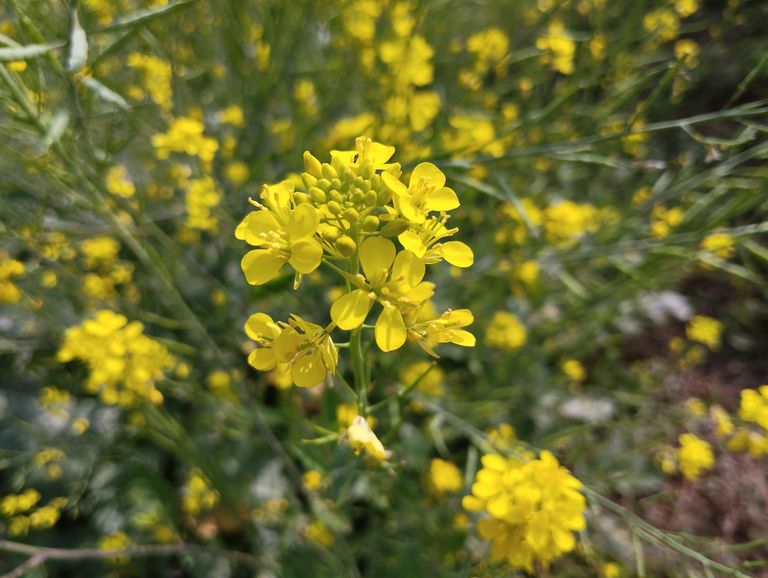
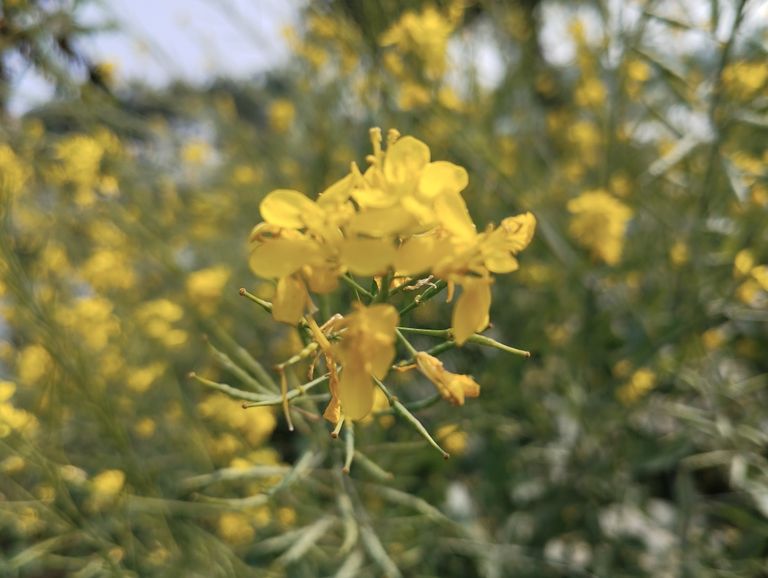
Causes of Mustard Flower Shedding
Mustard plants are known for their vibrant yellow flowers, which play a crucial role in seed production. However, the shedding of mustard flowers is a common issue faced by farmers, which directly impacts crop yield. Understanding the reasons behind flower shedding can help in managing this problem effectively. Below are the primary causes:
- Environmental Stress
Temperature Fluctuations: Mustard plants thrive in cool weather. Extreme heat or cold during the flowering stage can cause flowers to drop prematurely.
Water Stress: Both excessive watering and drought conditions can stress the plant, leading to flower shedding.
Humidity Levels: High or very low humidity levels can interfere with the fertilization process, resulting in flower drop.
- Nutrient Deficiency
Nitrogen Deficiency: Insufficient nitrogen in the soil affects plant vigor, making it difficult for flowers to stay attached.
Micronutrient Imbalance: Elements like boron and potassium are essential for flower development. A lack of these nutrients can weaken flowers and cause them to fall.
- Pests and Diseases
Insect Infestation: Pests like aphids and caterpillars feed on mustard plants, damaging the flowers and causing them to shed.
Fungal and Bacterial Infections: Diseases like Alternaria blight or bacterial leaf spot can weaken the plant’s ability to sustain flowers.
- Pollination Failure
Inadequate Pollinators: Mustard plants rely on insects like bees for pollination. A lack of pollinators in the field can result in flower shedding.
Weather Impacts on Pollinators: Unfavorable weather conditions can reduce pollinator activity, affecting pollination success.
- Overuse of Chemicals
Excessive Fertilizers: Over-application of nitrogen-rich fertilizers can lead to lush vegetative growth at the cost of flowers.
Improper Use of Pesticides: Some chemicals can harm pollinators or stress the plant, causing flowers to drop.
- Genetic Factors
Certain mustard varieties are more prone to flower shedding due to genetic predisposition. Choosing high-yield, stress-tolerant varieties can mitigate this issue.
How to Prevent Mustard Flower Shedding
To minimize flower shedding and improve yield, farmers can take the following measures:
- Maintain Optimal Environmental Conditions:
Ensure proper irrigation during dry spells and avoid waterlogging.
Use protective measures like mulching to regulate soil temperature.
- Balanced Fertilization:
Apply fertilizers based on soil testing to avoid overuse or deficiency of nutrients.
Supplement micronutrients like boron and potassium during critical growth stages.
- Integrated Pest Management (IPM):
Use biopesticides and natural predators to control pests.
Regularly inspect fields for signs of pest and disease outbreaks.
- Encourage Pollination:
Plant nectar-rich flowers around mustard fields to attract pollinators.
Avoid spraying pesticides during peak pollination hours.
- Select Suitable Varieties:
Opt for mustard varieties that are resistant to environmental stress and diseases.
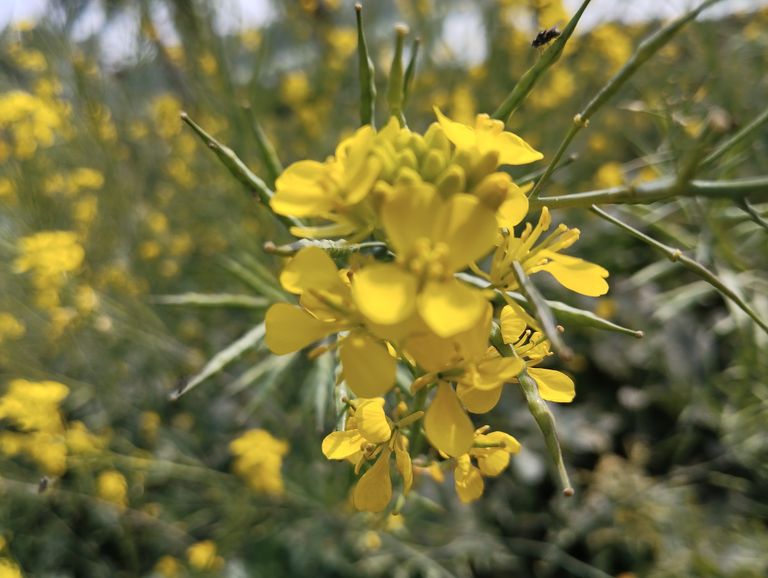
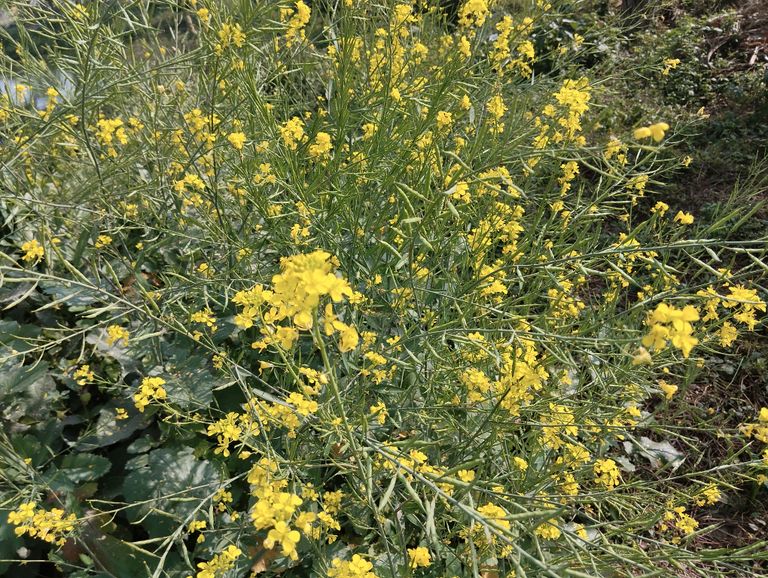
Benefits of Applying Mustard Oil on the Skin
Mustard oil has been used for centuries as a natural remedy in skincare and wellness routines. Its rich nutritional profile, including essential fatty acids, vitamins, and antioxidants, makes it a popular choice for promoting healthy skin. Here, we explore the key benefits of applying mustard oil on the skin and how it can enhance your skincare regimen.
- Natural Moisturizer
Mustard oil acts as an excellent natural moisturizer for dry skin. Its thick consistency and high content of Vitamin E help lock in moisture, keeping your skin soft and supple. Regular application can prevent flakiness and dryness, especially during cold weather.
- Improves Skin Tone
Rich in antioxidants and essential nutrients, mustard oil helps improve skin tone by reducing pigmentation and unevenness. It enhances blood circulation when massaged into the skin, giving it a natural, healthy glow.
- Anti-Aging Properties
The Vitamin E in mustard oil plays a significant role in protecting the skin from free radical damage. This helps delay signs of aging, such as wrinkles and fine lines, making your skin look youthful and radiant.
- Acts as a Natural Sunscreen
Mustard oil contains natural SPF properties that can protect the skin from harmful UV rays. While it may not replace a dedicated sunscreen, applying it offers an additional layer of protection against sun damage.
- Fights Skin Infections
Mustard oil possesses antifungal and antibacterial properties, making it effective in preventing and treating minor skin infections. It can be used to soothe irritated or inflamed skin caused by conditions like eczema or rashes.
- Detoxifies the Skin
Massaging mustard oil onto your skin helps stimulate sweat glands, which aids in the removal of toxins from the body. This detoxification process can result in clearer, healthier skin.
- Treats Cracked Heels and Rough Elbows
Thanks to its emollient properties, mustard oil is highly effective in treating cracked heels and rough elbows. Regular application softens toughened skin, promoting faster healing.
- Improves Blood Circulation
When mustard oil is used for a full-body massage, it improves blood circulation, ensuring better oxygen and nutrient delivery to the skin cells. This rejuvenates your skin, leaving it firm and glowing.
- Reduces Tan and Dark Spots
The natural bleaching properties of mustard oil can help reduce tan and lighten dark spots. Regular application helps restore your natural complexion and even out skin tone.
- Relieves Joint and Muscle Pain
While not directly related to skincare, massaging mustard oil on the body can alleviate joint and muscle pain. This added benefit enhances the overall health and relaxation of your skin and body.
How to Use Mustard Oil on the Skin
- As a Massage Oil: Warm a small amount of mustard oil and gently massage it onto your skin in circular motions.
- Mix with Other Ingredients: Combine mustard oil with natural ingredients like turmeric or lemon juice for enhanced benefits.
- Patch Test First: Always perform a patch test to check for allergic reactions before applying mustard oil to your skin.
Precautions
Avoid Overuse: Excessive use may clog pores, especially for people with oily skin.
Allergies: If you have sensitive skin, consult a dermatologist before use.
Purity: Ensure the mustard oil you use is pure and free from additives.
Mustard oil is a powerhouse of nutrients that can significantly enhance skin health. From moisturizing and improving skin tone to providing protection against infections and UV rays, its benefits are manifold. Incorporate mustard oil into your skincare routine to enjoy its natural goodness, but remember to use it wisely and in moderation.
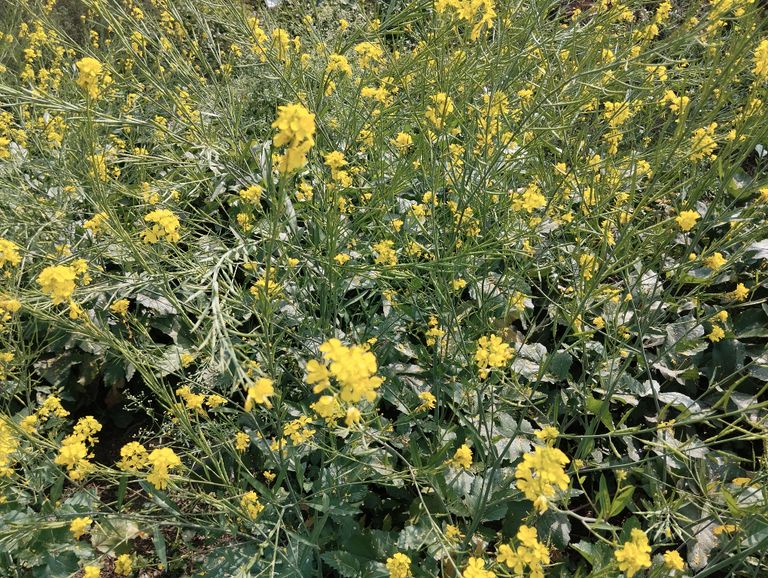
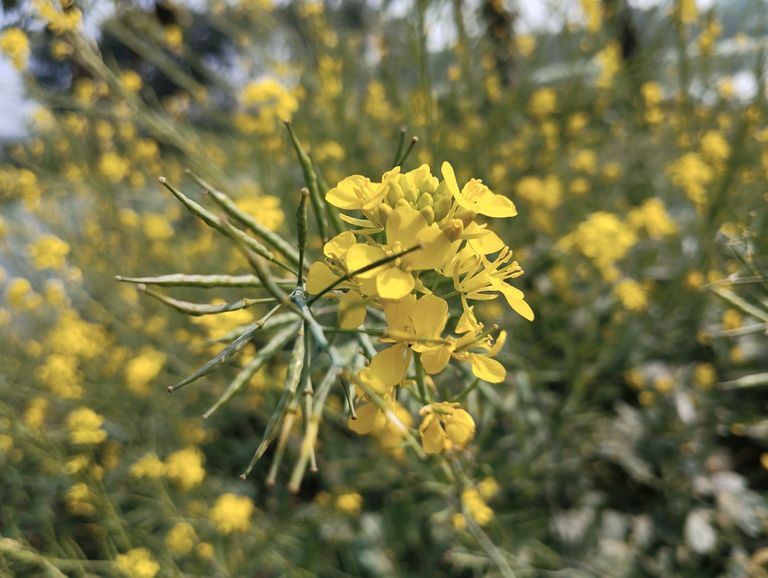
Mustard Cultivation: A Comprehensive Guide
Mustard (Brassica spp.) is one of the most important oilseed crops globally, especially in South Asia. With its high adaptability and multiple uses, mustard farming offers a promising opportunity for farmers to increase their income. This blog provides a detailed guide to mustard cultivation, from soil preparation to harvesting.
Importance of Mustard
- Nutritional Value: Mustard seeds are rich in oil (30-40%) and protein (20-25%), making them a valuable source of nutrition.
- Economic Benefits: Mustard oil is widely used for cooking, while mustard cake serves as animal feed and fertilizer.
- Cultural Relevance: In many regions, mustard greens are consumed as a vegetable, and the crop holds cultural significance during harvest festivals.
Step-by-Step Guide to Mustard Cultivation
- Climatic Requirements
Temperature: Mustard grows best in cool climates, with an optimal temperature range of 10–25°C.
Rainfall: Moderate rainfall (40-60 cm) is ideal. Excessive moisture can harm the crop.
Sunlight: Adequate sunlight during growth ensures better flowering and seed production.
- Soil Preparation
Soil Type: Mustard thrives in well-drained loamy or clay loam soils with a pH of 6.0–7.5.
Field Preparation: Plow the field thoroughly to achieve a fine tilth. Remove weeds and incorporate organic matter like farmyard manure (FYM) or compost for better soil fertility.
- Varieties of Mustard
Popular mustard varieties in South Asia include:
Pusa Bold: High-yielding and disease-resistant.
Varuna: Suitable for diverse climatic conditions.
Rohini: Tolerant to drought and high temperatures.
- Sowing
Time: Sowing is usually done in the Rabi season (October to November) in South Asia.
Seed Rate: Use 4–6 kg of seeds per hectare.
Spacing: Maintain a spacing of 30 cm between rows and 10 cm between plants for better aeration and growth.
Depth: Sow seeds at a depth of 1.5–2 cm for optimal germination.
- Nutrient Management
Fertilizers: Apply 60 kg nitrogen (N), 30 kg phosphorus (P), and 20 kg potassium (K) per hectare. Split nitrogen application—half at sowing and the rest after 30 days.
Micronutrients: Zinc and sulfur enhance oil content and yield.
- Irrigation
Mustard requires 2–3 light irrigations:
First at the vegetative stage (20-25 days after sowing).
Second during flowering.
Third during pod formation if necessary.
Avoid overwatering to prevent diseases like root rot.
- Weed and Pest Management
Weeding: Perform weeding 20-25 days after sowing. Mulching can help suppress weed growth.
Pests: Watch out for aphids, which can damage flowers and reduce yields. Use neem-based bio-pesticides or chemical sprays like dimethoate (at recommended doses).
Diseases: Common diseases include white rust and Alternaria blight. Ensure crop rotation and use disease-resistant seeds.
- Harvesting
Maturity: The crop is ready for harvest 90–120 days after sowing when the pods turn yellowish-brown.
Harvesting Method: Cut the plants close to the ground and stack them for 7–10 days to dry. Threshing can be done manually or with machines to separate seeds.
- Post-Harvest Management
Cleaning and Grading: Clean the seeds to remove impurities and grade them for market value.
Storage: Store mustard seeds in cool, dry conditions to prevent spoilage. Use airtight containers for long-term storage.
- Yield
Yield depends on factors like variety, soil health, and climatic conditions. On average:
Rainfed conditions: 1.2–1.5 tons per hectare.
Irrigated conditions: 2.0–2.5 tons per hectare.
Benefits of Mustard Farming
- Profitability: Mustard farming has low input costs and high market demand.
- Sustainability: Acts as a break crop in cereal-dominated cropping systems, improving soil health.
- Versatility: Provides oil, greens, and by-products like mustard cake.
Challenges in Mustard Cultivation
Climate Risks: Unseasonal rains or frost can damage crops.
Pests and Diseases: Require timely management to avoid yield losses.
Market Fluctuations: Prices may vary depending on supply and demand.
Mustard cultivation is a rewarding endeavor when managed properly. By following best practices in soil preparation, irrigation, and pest control, farmers can achieve high yields and maximize profits. With growing demand for mustard oil and seeds, this crop remains a valuable addition to agricultural systems worldwide.
Pro Tip: Diversify your farm income by exploring mustard-based products like oil, pickles, or sauces to tap into value-added markets.
